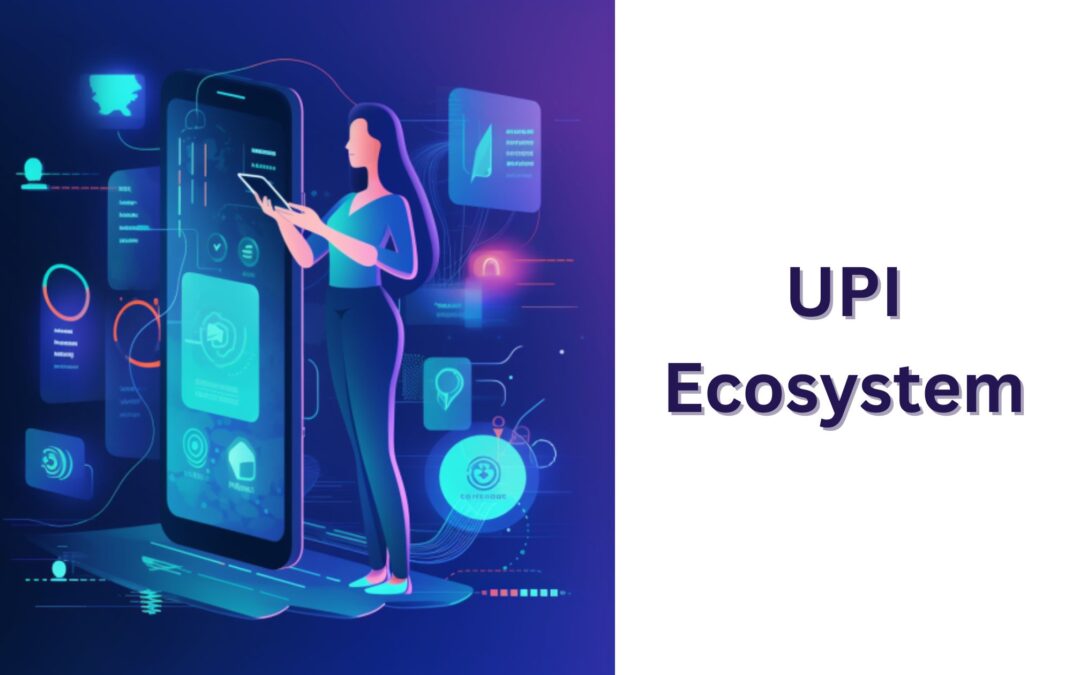In today’s fast-paced digital world, the UPI (Unified Payments Interface) ecosystem has emerged as a game-changer, revolutionizing the way we make digital payments. From simplifying peer-to-peer transactions to fueling e-commerce growth, UPI has become an integral part of our daily lives.
In this comprehensive guide, we will delve into the intricacies of the UPI ecosystem, exploring its history, functioning, benefits, and the future it holds.
Understanding UPI: A Brief History
To comprehend the significance of the UPI ecosystem, we must first delve into its origins. UPI was introduced in India in 2016 by the National Payments Corporation of India (NPCI). Its primary objective was to facilitate instant money transfers between bank accounts using mobile devices. Since then, UPI has witnessed remarkable growth, becoming the backbone of India’s digital payment landscape.
How Does UPI Ecosystem Work?
Registration and Linking Bank Accounts: To get started with UPI, users need to download a UPI-enabled app and link their bank accounts. This step ensures a secure connection between the user’s account and the UPI platform.
UPI ID Creation: Once the bank account is linked, users are assigned a unique UPI ID, which acts as their virtual payment address. This ID simplifies the process of sending and receiving money.
Making Payments: Making payments through UPI is as simple as entering the recipient’s UPI ID, the amount to be transferred, and a secure PIN. Transactions are processed instantly, making it a preferred choice for quick money transfers.
The Advantages of UPI Ecosystem
Convenience and Accessibility: One of the most significant advantages of UPI is its convenience. Users can make payments 24/7 from the comfort of their homes or on the go, reducing the need for physical cash.
Enhanced Security: UPI transactions are highly secure, thanks to multi-factor authentication and encryption protocols. Users can also set transaction limits, adding an extra layer of protection.
Seamless Fund Transfers: UPI allows for hassle-free fund transfers between different banks, eliminating the need for tedious account details. This makes splitting bills with friends or family a breeze.
UPI in Daily Life
Grocery Shopping: Imagine a scenario where you can pay for your groceries without ever reaching for your wallet. With UPI, this is a reality. Simply scan the merchant’s QR code, enter the amount, and voilà, your groceries are paid for.
Online Bill Payments: Paying utility bills, mobile recharges, and DTH subscriptions have never been easier. UPI apps provide a single platform to settle all your bills without any hassle.
Peer-to-Peer Transactions: Whether you owe a friend money for dinner or need to split a cab fare, UPI enables quick and easy peer-to-peer transactions. No more scrambling for change or ATM visits.
The Role of the UPI Ecosystem in E-commerce
Cashless Shopping: E-commerce platforms have embraced UPI, making it the preferred mode of payment for online shoppers. It not only streamlines the payment process but also enhances security.
Easier Checkout Process: Online shopping carts have become more convenient with UPI integration. Customers can pay swiftly and securely, reducing cart abandonment rates.
UPI’s Impact on Financial Inclusion
One of the notable achievements of the UPI ecosystem is its role in advancing financial inclusion. It has provided millions of unbanked and underbanked individuals with access to digital financial services.
UPI Ecosystem: Future Trends and Innovations
UPI 2.0: The Next Leap: UPI 2.0 promises even more features, including overdraft facilities, enhanced transaction limits, and improved security measures.
International Expansion: UPI’s success in India has piqued the interest of other countries. Efforts are underway to expand the UPI ecosystem to international markets, potentially transforming global digital payments.
UPI Ecosystem: Challenges and Security Concerns
While UPI offers numerous benefits, it also faces challenges such as cyber threats and fraud. It’s essential for users to stay vigilant and follow best practices to ensure their transactions remain secure.
Conclusion
The UPI ecosystem has redefined the way we handle digital payments. Its simplicity, security, and widespread adoption have made it a cornerstone of India’s digital economy. As we look ahead, UPI’s evolution promises to bring even more convenience and innovation to the world of digital transactions.
FAQs
1. Is UPI available only in India?
UPI initially launched in India, but its success has sparked interest in other countries, leading to discussions about its international expansion.
2. What is the maximum limit for UPI transactions?
The maximum transaction limit for UPI varies from bank to bank. Most banks have set a daily limit, which can range from a few thousand to a lakh or more.
3. How can I reset my UPI PIN?
To reset your UPI PIN, you can typically do so within your UPI-enabled app. Look for the “Forgot PIN” or similar option, and follow the provided instructions.
4. Are there any fees associated with using UPI?
In most cases, UPI transactions are free. However, it’s advisable to check with your bank or UPI app provider for any specific fees or charges that may apply.
5. Is UPI safe for making large transactions?
UPI transactions are secure, but it’s essential to exercise caution when making large transactions. Ensure you follow best security practices and use secure networks for such transactions.
In a world where digital transactions are becoming increasingly prevalent, UPI stands as a testament to innovation and convenience. Embrace the UPI ecosystem and enjoy hassle-free digital payments.

